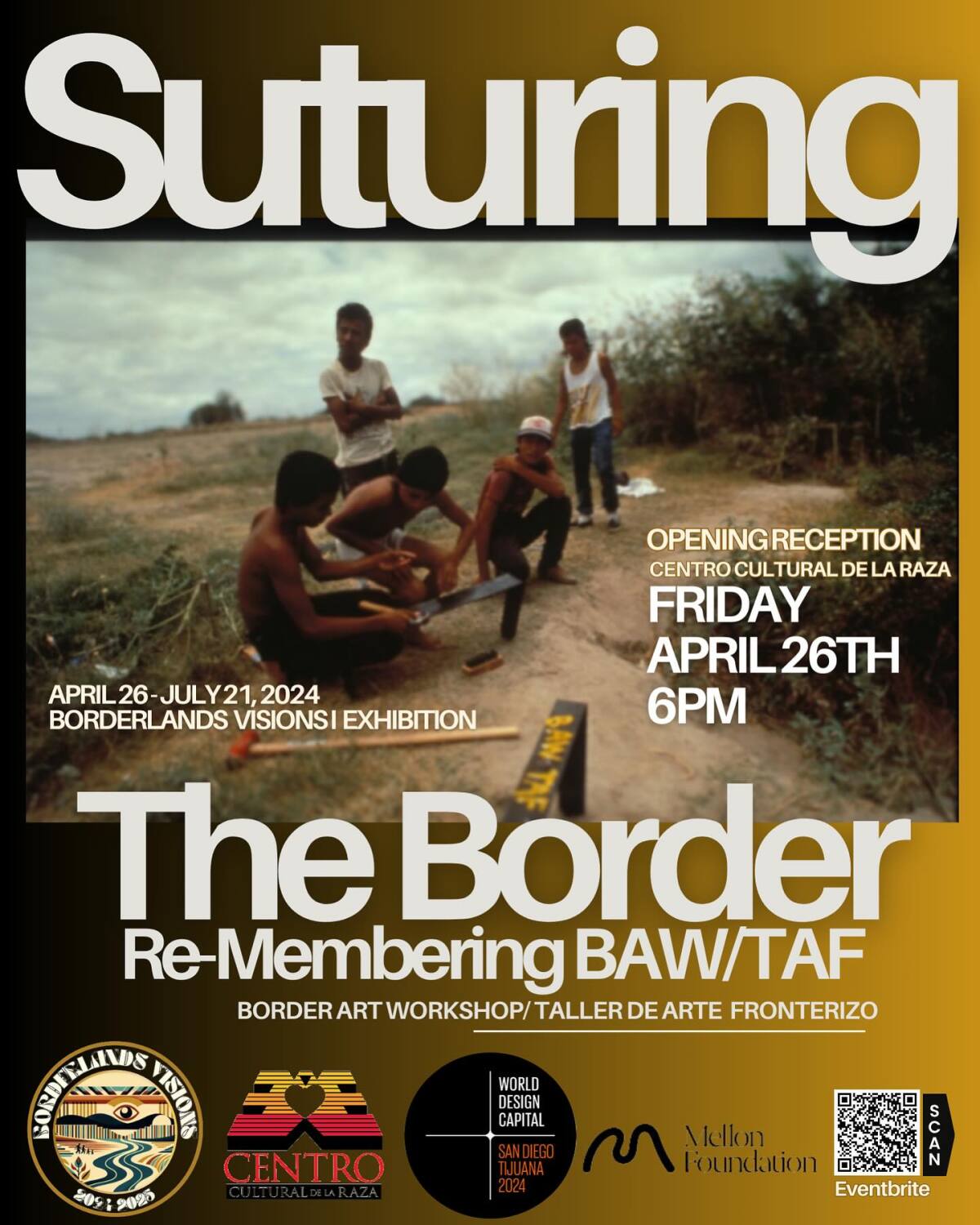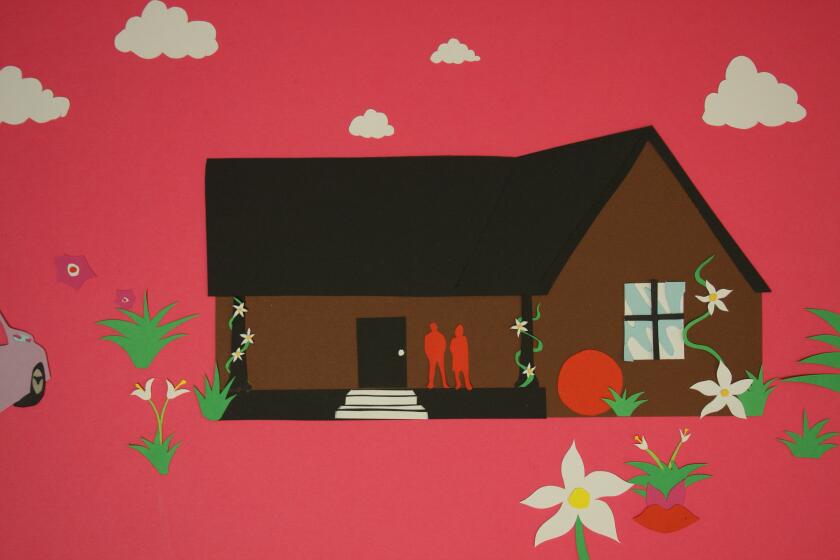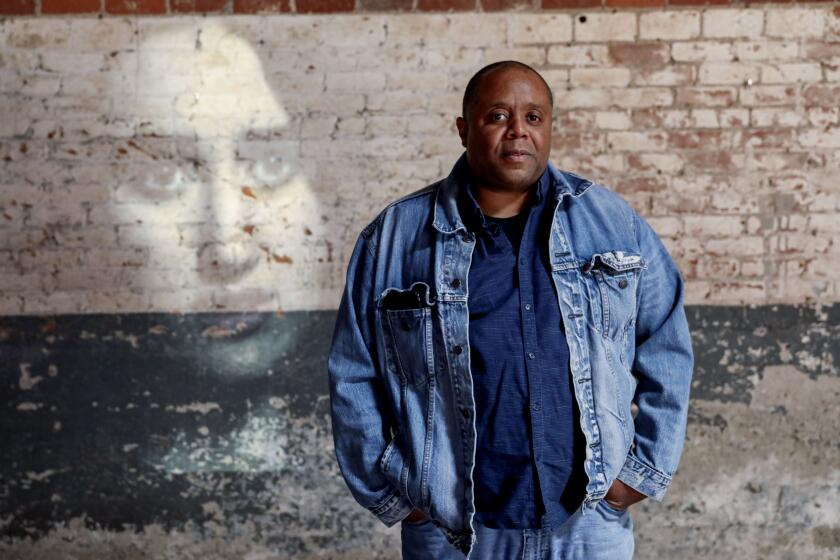Opinion: Centro Cultural de la Raza again provides key context on complex border issues

Hernández is executive director at Centro Cultural de la Raza in San Diego. She lives in Hillcrest.
The U.S.-Mexico border has long served as a scapegoat for trenchant problems in the United States, ranging from ongoing warfare to the rise in right-wing authoritarianism to our fiscal challenges. One presidential candidate created a legacy based in large part on rhetoric calling people crossing this particular border “not human” and responsible for “poisoning the blood of our country.” His path was paved by media coverage and political rhetoric that casually and continually characterizes migrants as orchestrating “surges” and “crises” for the U.S.
This now-mainstream discourse normalizes splitting and devaluation of the peoples, cultures and geographies of the borderlands. A casual web search yields an impoverished perspective — scores of photographs of a militarized Border Patrol, a hulking wall, checkpoints and surveillance technologies, all holding crowds of people at bay. This year alone, President Joe Biden offered, during negotiations with an increasingly hard-line Congress, an immigration deal making petitions for asylum even more difficult, increasing detention capacity and the use of expedited expulsion (a process by which immigration officials can remove an ever-expanding pool of migrants and asylum seekers without a hearing) even further, and to “shut down the border” when, in officials’ collective estimation, too many people seek entry on a given day. Emboldened state legislators followed suit — in Texas, for example, it is now a state crime to enter without authorization even though migration is a matter of federal jurisdiction.
Now more than ever we must, as a matter of affirming our collective humanity and truth, assert and address the need to generate creative work and critical discourse reflecting borderlands realities and a vision of what it might mean to live in a world without borders.
For 54 years, Centro Cultural de la Raza in Balboa Park has celebrated and nurtured the creative richness and stewarded the rage and hope of Indigenous, Mexican, Chicana/o/x and Latinx people of the borderlands — people who love and know the expansive region as home for thousands of years or a few generations, or as a place of temporary respite. Our legacy and practices are transgressive precisely because our communities exist across, without and in spite of national borders. To these ends, our ambitious, two-year Borderlands Visions project will create, archive and reflect upon the critical role of art and cultural production in the borderlands.
Our inaugural exhibit, “Suturing the Border: Re-Membering BAW/TAF,” or Border Art Workshop/Taller de Arte Fronterizo, opening on Friday, documents and builds upon a groundbreaking initiative that incubated definitive Chicana/o artists and signaled the borderlands as a critical site for creative work. Members of the Border Art Workshop/Taller de Arte Fronterizo state they and their work were squarely “of the time,” but their general statement is as urgent and compelling today as it was when it was crafted in 1984. Intended “to reveal the negative aspects of ethnocentrism and the new growing dynamics of borderland cultural multiplicity [...] Border Art Workshop/Taller de Arte Fronterizo does not recognize cultural borders but is extremely concerned with the border between present and future. If the United States-Mexican border is to become a region of human cooperation and cultural consciousness, then Mexicans and North Americans must establish a process of social dialogue to deal with the many problems now confronting them.”
“Suturing the Border: Re-Membering BAW/TAF” focuses on four projects, providing a glimpse of the range of artistic visual statements and impact of this defining and ever-shifting formation sponsored and housed by Centro for the better part of its existence in the 1980s-1990s. Each project — End of the Line (1986), Border Sutures (1990), South=North=South (1991) and Poblado Maclovio Rojas (1997) — is unique in its own right, yet shares a distinct concern with everyday life of border dwellers. Border Art Workshop/Taller de Arte Fronterizo sought to redefine and prefigure how border communities enact different social relations because of and despite an international border that seeks to divide and restrict our built environment, privileging walls of separation over the spirit of collaboration so definitive of Border Art Workshop/Taller de Arte Fronterizo and the Centro Cultural de la Raza.
“Suturing the Border: Re-Membering BAW/TAF” is part of the World Design Capital San Diego Tijuana 2024 series of events. The exhibit opens at 6 p.m. Friday at Centro Cultural de la Raza, 2004 Park Boulevard, in San Diego.
Get Weekend Opinion on Sundays and Reader Opinion on Mondays
Editorials, commentary and more delivered Sunday morning, and Reader Reaction on Mondays.
You may occasionally receive promotional content from the San Diego Union-Tribune.





